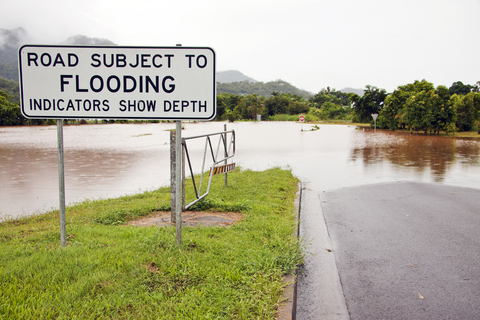
While the Environmental Agency in the UK has been vocal in recent years regarding floodplains and their impact on homes and businesses, there are growing concerns about the impact this information is having on house prices. It seems that not all flood maps of the UK are accurate and despite challenging the Environmental Agency it is proving very difficult to have maps redrawn and inaccurate information rewritten in the short term.
Daily Telegraph article
There is an article in the Daily Telegraph which highlights specific problems which have arisen because of inaccurate flood maps published by the Environmental Agency. Flood wardens in Bisham and Marlow, Berkshire and Buckinghamshire villages have reported instances of local areas shown to have been flooded in storms earlier this century when they were dry! Even the most recent flood maps of 2014 still show incorrect information even though the Environmental Agency has been informed of the errors.
No smoke without fire
Despite the fact some of the UK media have picked up on inaccurate flood maps, in many cases the damage has already been done. If the information is truly incorrect, as has been proven on numerous occasions, you would expect property investors to be savvier. The problem is that where there is even a perceived increase in the risk of flooding, assuming local areas have encountered flooding, many investors will simply look elsewhere. This then puts downward pressure on house prices in the area and soon everybody is discussing the “flood problem” which does not exist.
It appears many of these flood maps are created using “laser mapping” which depends on aerial scans to record flooding in specific regions. It looks as though the information collated from this type of equipment is not 100% accurate and may have led to some of the incorrect floodplains being added to recent flood maps.
Future corrections to flood maps
Where the Environmental Agency has been advised of mistakes on flood maps they have, where there is evidence, agreed to correct these in the future. The problem is that the period between the incorrect map being published and a correction, often years down the line, places undue pressure on house prices in affected regions. Even if they were to return to the radar of investors when flood plain information was corrected the area may have encountered years of house price underperformance which they might never get back.
Interestingly, there may well be opportunities for investors looking at housing assets which are undervalued, for reasons such as incorrect flood maps, to pick up relatively cheap stock and wait for the eventual “correction”. Assuming all incorrect flood maps are republished using accurate data in the future, this may well be an interesting future investment strategy?
Conclusion
Whether or not investors automatically believe government data on issues such as floodplains is debatable. The real problem is that any doubt placed in the mind of investors can see them look elsewhere. Very quickly “none stories” can grow arms and legs and cause all kinds of confusion, leading to some areas of the UK housing market falling off the radar of investors. If nothing else this subject shows that while it is a starting point to use official data to pinpoint attractive property markets, you should also do your own research.

